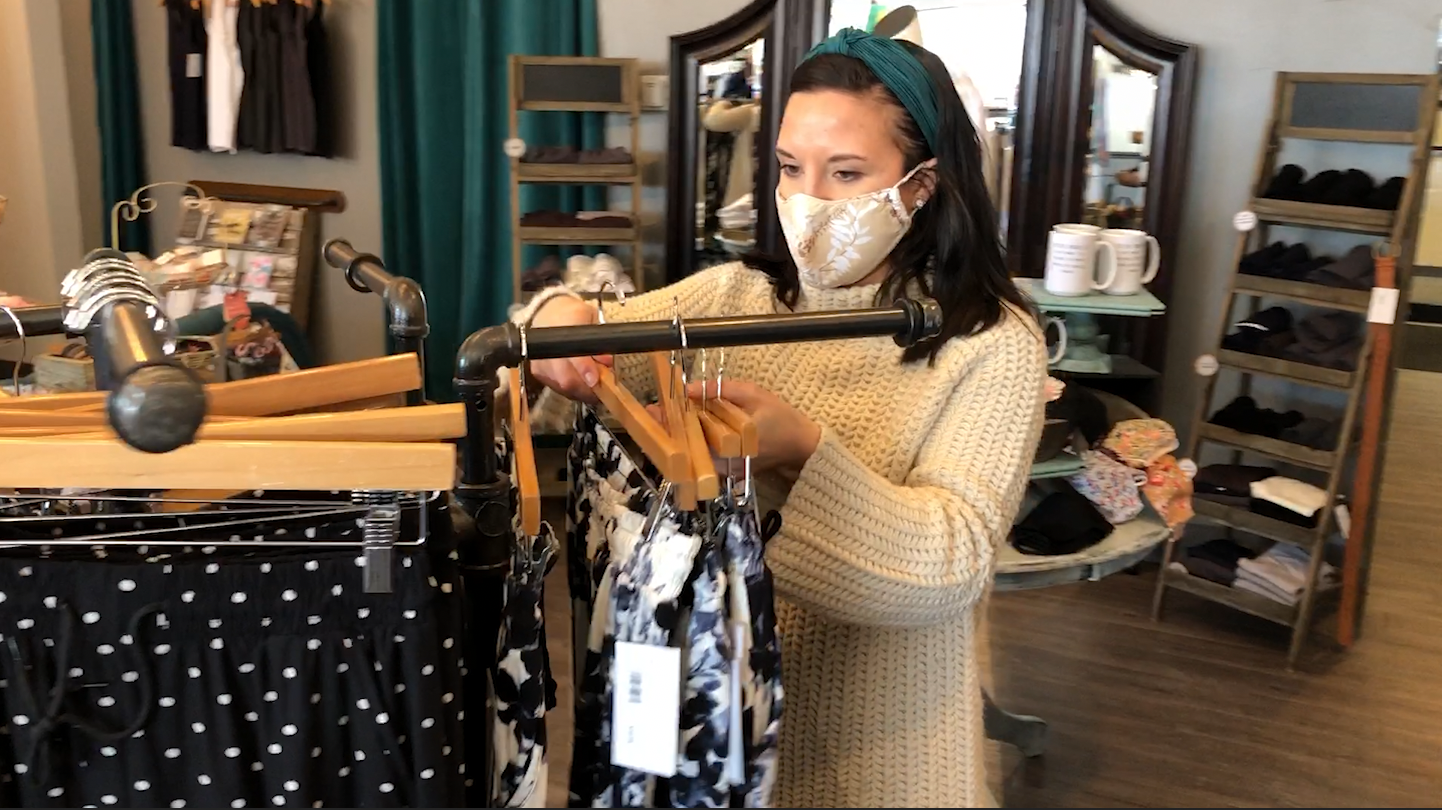DE PERE, Wis. — Bouncing back from a pandemic-induced shutdown isn’t the kind of thing that happens overnight.
It’s a long process.
Sarah Hickey, co-owner of Hey, Daisy! stores in northeast Wisconsin have been adapting to it for the past year.
“I remember the first week we were back open and people would come in and say, ‘I’m so glad you made it.’ And I said, ‘We still have a ways to go,’” she said. “Getting back open was the first part of it, but that lost revenue is really hard for businesses to recover.”

The business has adapted: adding online sales and shifting some of clothing it carries to more casual fashions.
“Staying positive and being innovative is important,” Hickey said. “If you’re just going to chug along waiting it out and waiting to see what happens and doing what you’ve always done, I think it’s going to be a rougher road than trying to be a little more progressive and staying ahead of what’s changing.”
A year into the pandemic the economy remains all over the board.
“The path to recovery here is very much fractured,” said Mark Schaffer, an associate professor of economics at St. Norbert College in De Pere. “Some people have been able to weather this storm without too much trouble from an economic standpoint, other people have had a much harder time.””
While some areas have bounced back or have made significant gains, like housing sectors including healthcare, restaurants and hotels have shown much smaller gains. While there is no set economic path forward, it’s not all doom and gloom.
“It looks like there’s some more optimism coming in some of our economic data, which is good,” Schaffer said. “We’re seeing the vaccine roll out being a positive development moving forward, which is also good.”
Hey, Daisy! Is still adapting. It’s going from four stores to three, closing its Appleton location in the next month.
Hickey said it was a tough decision — but they’re not giving up.
“As long as we accept things are different, I think we’ll be OK,” she said. “Maybe people aren’t buying the dresses that they use to buy, so what are they buying instead? And making sure we have those things for consumers.”



